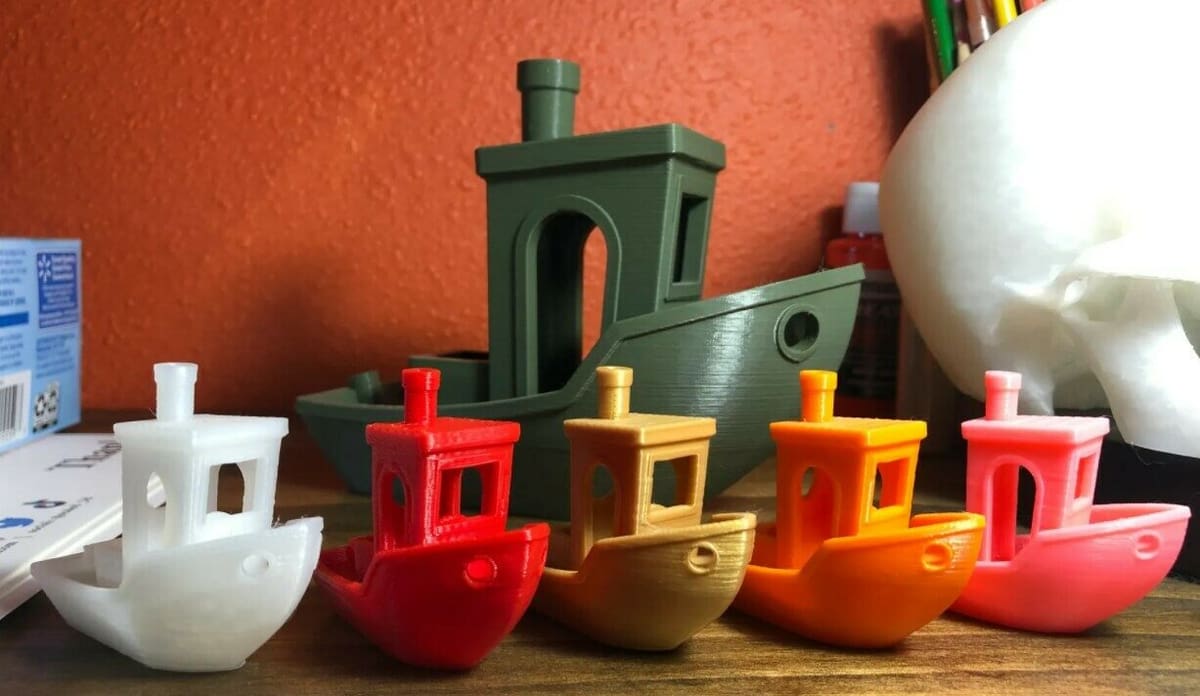Knowing how long a spool of filament will last can be very important for makers. Keeping track of just how much you get out of a spool can help avoid filament run-outs mid-print, prepare for long material shipping times, and plan your next filament purchase selection with more accuracy. It’s also just nice to know!
In this article, we’ll predict for how long a spool of filament can serve you. So, with no further ado, let’s begin!
Making Some Estimations

Determining how long a spool of filament will last is dependent on many variables. In fact, it really depends on you. How often do you print? What do you print? How many spools do you use at a time? Are you printing tough, mechanical parts, or are you printing purely aesthetic parts?
For these reasons, one could estimate a spool’s lifecycle in many different ways. For example, you could create a spreadsheet to track your average filament consumption per day (or week, month, year, etc.), account for your custom slicer settings, note the particular density of your material, calculate the exact mass of material per spool, and factor in the performance of each machine you use. Such a method would be perfect if you needed to plan ahead and order material with precision.
However, if you just need rough estimates or some governing rules of thumb, this article is for you.
Method
To give a rough estimate of how long a 1-kg spool of PLA lasts, we’ll put different types of users into three levels of printing – casual, frequent, and heavy – to determine a number of hours of printing per week. Then, using a rate of grams printed per hour, we can determine about how long our spool will last.
Assumptions
Using this approximation method, we’ll need to make the following assumptions:
- One spool of PLA: Naturally, a spool of material will last longer if you’re using and switching between multiple colors or materials. Our estimations therefore assume that you’re just using one spool of PLA. To adjust it for multiple, you’ll need to multiply.
- One 3D printer: This sort of follows from the previous assumption, but if you wanted to adjust the estimations for multiple spools, you’d also have to consider how many machines you’re using simultaneously.
- Default Cura profiles: Each maker has their own favorite printing profiles. To eliminate discrepancies here, our estimations are based on Cura‘s default settings for generic PLA.
- Exactly 1 kg of material: Although many spools are marketed as having 1 kg of material, some have slightly more or slightly less. To keep things simple, we’ll assume that our spool is exact.
Next, to better communicate our estimations, we’ll use some representative prints, including the community-renowned 3DBenchy, Baby Groot, and Self-Watering Planter. Using Cura’s default settings for generic PLA, we can also use these designs to help determine an average rate of grams printed per hour:
- 3DBenchy, or just Benchy, is a “jolly 3D printing torture-test” and the go-to benchmark for 3D printing enthusiasts everywhere. The Benchy has a 2.5-hour print time and uses about 15 g of material.
- Baby Groot is a popular print for a decoration or a toy. It takes about 14 hours and 115 g of filament.
- The Self-watering Planter is a useful design that has a 21-hour print time and will put you back 175 g of filament.
Based on these examples, a maker uses on average about 8 g per hour. With these assumptions and estimations under our belt, let’s get started.
Casual Printing
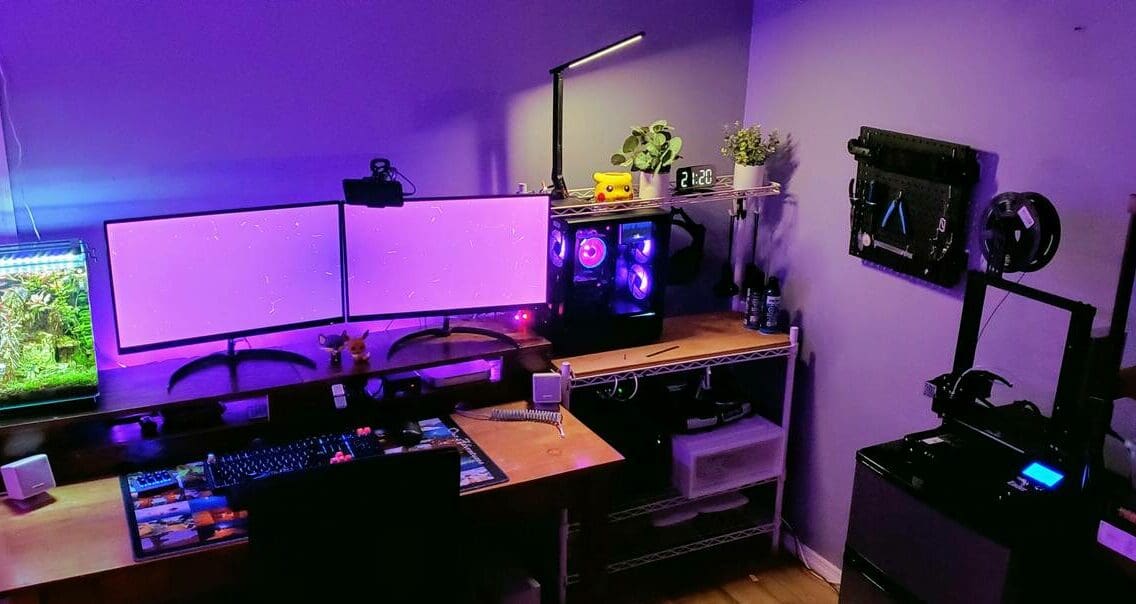
Let’s first explore how long a spool of PLA filament will last for a casual printer. Casual printers might include general DIYers (interested in more than just 3D printing), teachers making class props, parents making occasional gifts, and so on.
The bottom line is, if you only print now and then, you probably fall under this category. To put a number of hours on it, let’s say you print around the equivalent of two Baby Groots per month (or 3-4 Benchys per week). And to allow for some variability, let’s put that at 5 to 9 hours of printing per week (or 20 to 36 hours per month).
Under these conditions, you could expect to use about 40 to 70 g per week. Thus, a 1-kg spool of PLA should last you about 14 to 25 weeks, which equates to 4 to 6 months! Keep an eye on shipping costs, and make sure to order filament so that it arrives about 4 months after your last spool purchase.
- Time spent printing per week: 5-9 hours
- Amount of material used per week: 40-70 g
- Duration of spool: 14-25 weeks, 4-6 months
Frequent Printing
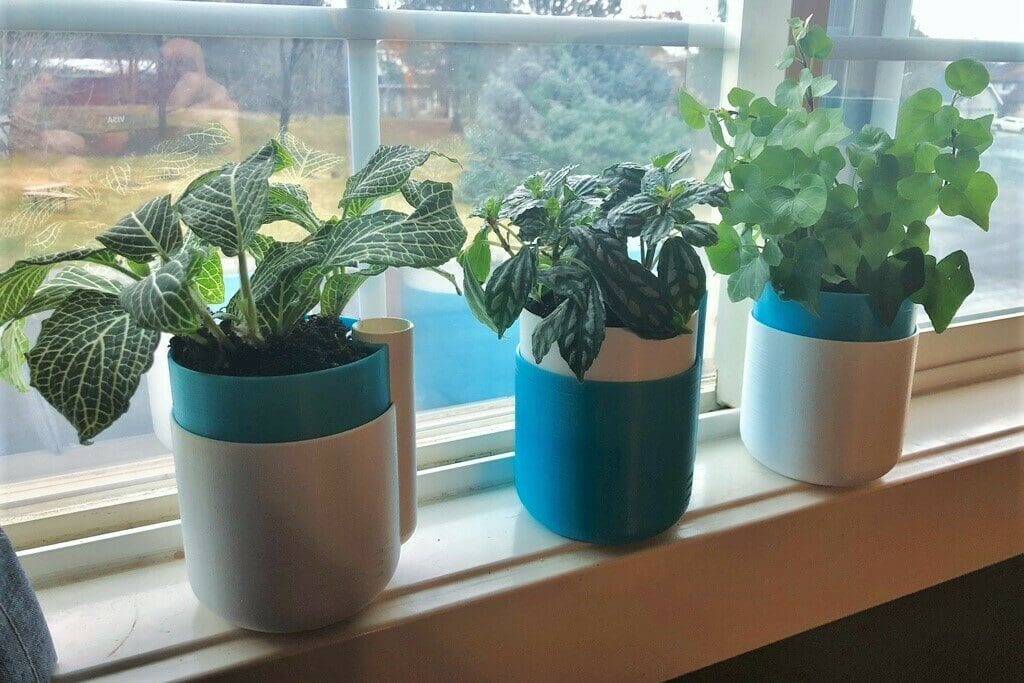
3D printing enthusiasts and makers who use 3D printing in most of their projects are our frequent printers. These are the people who almost definitely have (at least) one printer at home and a never-ending list of things to print, from pop culture desk statues to handy household gadgets.
We imagine someone who falls under this category printing the equivalent of one self-watering planter per week (or 10-14 Benchys in the same period). Let’s say that’s 17 to 25 hours per week or 70 to 100 per month. Basically, you’re printing something big each week or a few small things every day.
At this rate, your printers are eating about 135 to 200 g of material per week. So if you’re a frequent printer, expect to exhaust a spool of PLA in 5 to 7 weeks, which is one or two months. If you’re using one spool at a time, prepare to reorder material every other month. Keeping two or more extra spools on hand is a good idea.
- Time spent printing per week: 17-25 hours
- Amount of material used per week: 135-200 g
- Duration of spool: 5-7 weeks
Heavy Printing
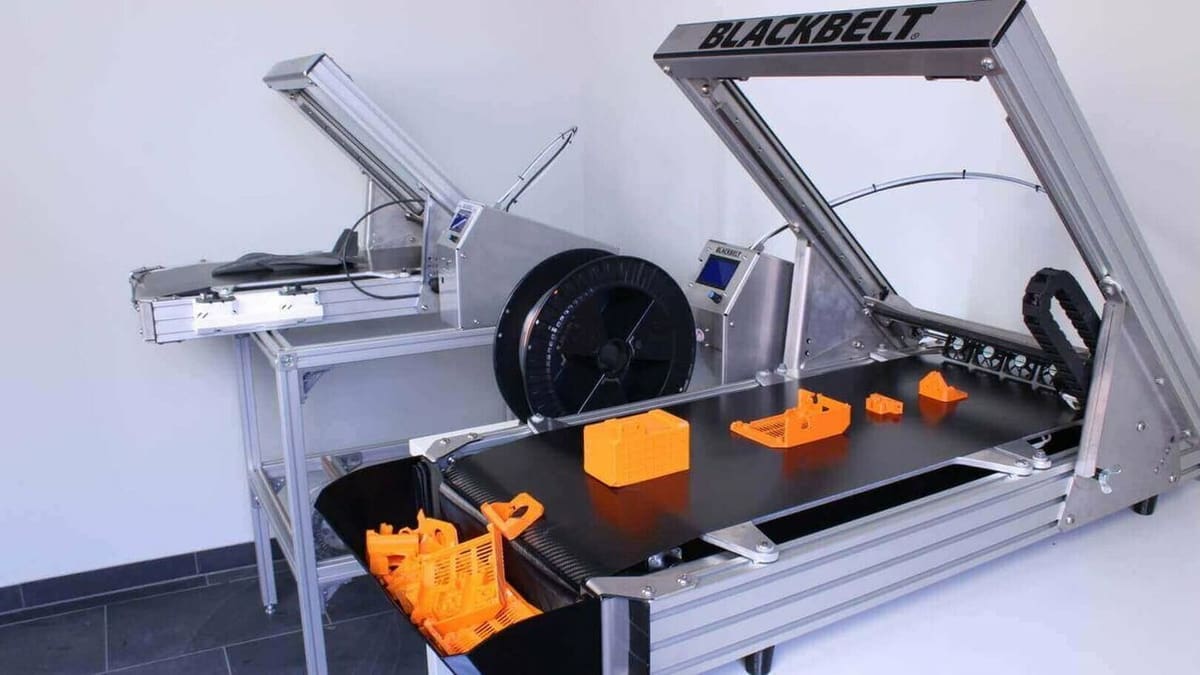
Those who run 3D printing farms or businesses or even some 3D printing YouTubers are heavy printers. That is to say, these people are printing non-stop or nearly non-stop, from 40 hours per week (a full work week) to 24/7.
This is the widest range in this article, and if you’re printing at this rate, you’re probably used to rolling through filament blisteringly quickly. If you’re a heavy printer, you’ll need lots of filament in stock to avoid ordering material every time you turn the corner.
To keep things relatable, someone in this bracket is printing up to 12 Baby Groots, 8 Self-Watering Planters, or 67 Benchys per week! Nevertheless, based on the range of 40 to 168 (24/7) hours per week, we can say a heavy printer uses between 320 and 1,345 g of filament per week (or 45 to 190 g per day).
At these rates, a spool will last from 5 to 22 days, or roughly 1 to 3 weeks. If you want to plan on ordering filament once a month, try to keep four or more spools on hand. If a six-month ordering period is right for you, plan on keeping 25 or more spools on your shelves.
- Time spent printing per week: 40-168 hours
- Amount of material used per week: 320-1,345 g
- Duration of spool: 5-22 days, 1-3 weeks
Other Variables
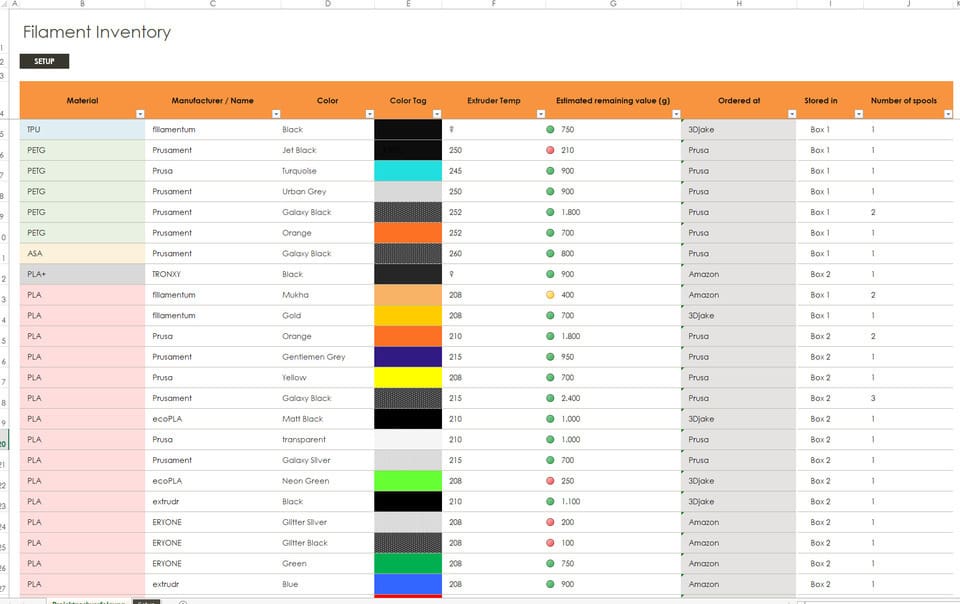
We’ve tried to give a relatable answer to how long a spool of filament will last. But the real answer is, it depends! Specifics are unique to each maker, but you can definitely use the method explained above to estimate how long your material will last.
You can also keep a tally or spreadsheet of your prints to know exactly how much material you’ve printed, and how much you have left until empty.
If you want to conserve your material as much as possible, consider reducing wall count, reducing infill, and eliminating the need for printed build plate adhesion and support.
Have fun with these tips and happy printing!
License: The text of "1 kg of PLA Filament: How Long Does It Last?" by All3DP is licensed under a Creative Commons Attribution 4.0 International License.

